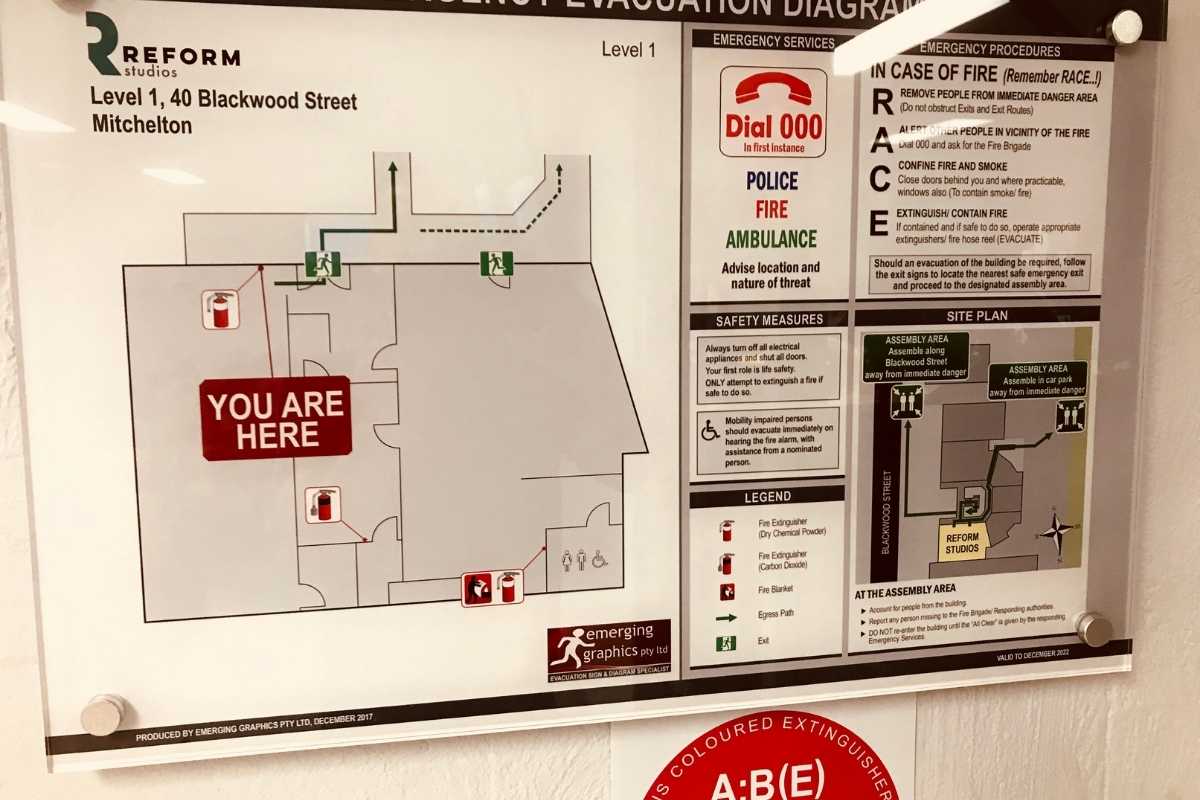Usually a workplace emergency plan is designed to handle the most challenging form of catastrophe that could reasonably be expected by a business. Once the business has set up the organisation (Emergency Control Organisation or ECO) and has the necessary procedures in place for the ‘worst case’ scenarios, these may then be accommodated to the specific needs of different types of emergencies.
In most workplaces, fire is the likely going to be the most challenging emergency, that is reasonably likely to occur. That is why emergency plans are commonly designed around response to fire emergencies as those procedures can then be adapted to provide a response to bomb threats, earthquakes, armed intruders as well as other potential emergencies.
A critical element of the workplace emergency plan is that it out to be realistic. In addition, it must be based on a sound understanding of the kinds of emergencies that could occur (including any unique characteristics for the business or location). When an emergency plan is not established from a sound understanding and from solid, proven principles it may be ineffective or disregarded by workers and site occupants and create a greater danger to life safety during a crisis.
The purpose of the Emergency Plan is to establish control mechanisms to mitigate the effects of almost any emergency that may occur on a site. At a workplace the emergency plan must clearly define how:
- emergencies are to be reported
- others affected by the emergency are to be alerted
- people will evacuate and move to a position of safety in an emergency
- evacuations are to be initiated and controlled
- people are to be accounted for and kept informed during an emergency
- liaison will be established and maintained with emergency services
- the site emergency plan interacts with wider organisational, building or community emergency plans
When needed, the emergency plan provides the response strategy which will normally be put into operation by the ECO using established communications methods and well-versed procedures. The emergency plan is your method of controlling a situation that has deteriorated due to the failure of other risk controls to prevent an emergency (prevent is better than cure).
State fire services should often be consulted in the development of emergency plans, especially where significant hazards exist onsite (such as dangerous goods, hazardous chemicals etc). Generally it would be expected that the site owners and management would implement the recommendations of the fire service, unless there is an acceptable and compliant alternative.
The emergency plan should be sufficiently robust to be capable of dealing with the worst credible scenario and should avoid being based around less credible incidents (such as aircraft crashing into the site – unless that site is under a flight path close to an airport).
There should be sufficient flexibility in the emergency plan so that lower level (less severe) incidents can be handled with equal effectiveness as the more significant incidents of the same nature.
If there is a possibility of an emergency on the site extending to neighbouring properties or impacting the community, the emergency plan should have procedures for alerting, notifying and coordinating with neighbouring sites and in the formative stages should involve collaboration with neighbouring sites and the community to ensure a coordinated response and an ability to leverage the resources of neighbouring sites if required.
If you would like to know more or would like our assistance in the areas mentioned check us out at www.intrinsicsafety.com.au. Alternately, call us on 1300 990 336 or email us at [email protected]



